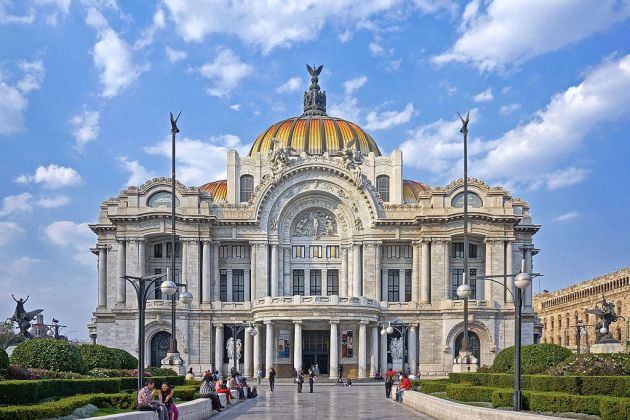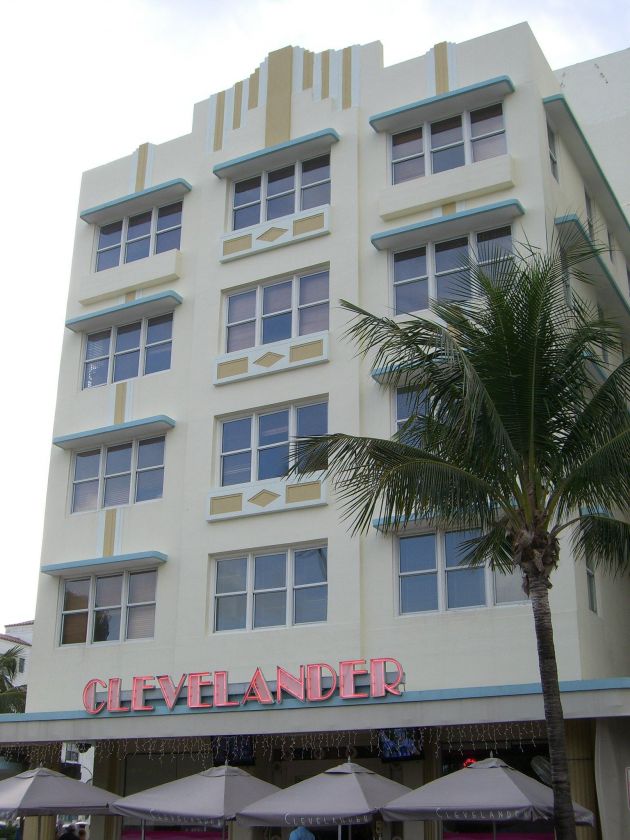
Art Deco had its heyday in the 1920s and 1930s and was a modern interpretation of neoclassical style
Art Deco was popular in the 1920s and 1930s. It can be seen in some of New York’s most famous skyscrapers, kitsch cinemas around the world, and everyday objects such as radios, fridges and vacuum cleaners.
Also known as the ‘style moderne’, Art Deco began as a movement in architecture, design and art in the 1920s in Paris, spreading quickly through Europe and America. The style represented luxury and sophistication and employed fine craftsmanship and expensive materials – pieces even sometimes incorporated ivory and silver. Although it was rarely mass-produced, the forms that Art Deco buildings and objects took in many ways celebrated the age of the machine with precise forms and simple, symmetrica geometry. Art Deco was heavily influenced by Art Nouveau, Bauhaus and Cubism and the colours of the Ballet Russes.
The characteristics of Art Deco design are clean and simple forms with elegant finishes. The style moved away from traditionalism and aimed instead for a look that conveyed luxury and wealth. Designers working in the style were known to use bright colours, from bright oranges and yellows to pastel blues and pinks. Many designs also incorporated motifs or flora and fauna, nude females, and and animals in the patterns used. The style often incorporated repetitive linear patterns or zigzagging shapes.

The style was first exhibited at the Exposition Internationale des Arts Decoratifs et Industriels Modernes in Paris in 1925, and the movement took its name from the exhibition. Bauhaus founder Le Corbusier wrote a series of essays about his thoughts on the exhibition, entitled “1925 Expo. Arts. Deco.”. In these essays he criticised the use of colour and lavish materials.
The exhibition’s primary purpose was to promote French design and the manufacturers of luxury goods. Each of Paris’s main department stores had a dedicated pavilion.
Examples of Art Deco in architecture include the Empire State Building by Shreve, Lamb and Harmon; the Chrysler Building by William Van Allen; and the Rockefeller Center. The Art Deco skyscrapers that went up in New York in the 1930s are amongst the most recognisable buildings on the city’s skyline.
By the mid 1930s the style could be seen in buildings all around the world, including the Palacio de Bellas Artes in Mexico City, the Mayakovskaya Metro station in Moscow, the Paramount dancehall and theatre in Shanghai and the National Diet Building in Tokyo.
Miami’s South Beach in Florida is now known as the Art Deco historic district because of the exten to which the style took over the area in the 1930s. Over 800 buildings were built between the early 1920s and the early 1940s and the area was preserved before it could be demolished. Many of the pastel-coloured hotels have been restored. Buildings such as the Cleveland Hotel and Beacon South Beach Hotel capture the Art Deco influence in the area.
The movement also influenced graphic arts, and before World War I many posters and print designs were created in the Art Deco style. The posters for the Moulin Rouge for example, as well as the covers of prominent American fashion magazines like Vogue and Harper’s Bazaar.

Art Deco also influenced transport design, with locomotives, trains and cruise liners taking on the look and feel of the movement. The shapes were influenced by aerodynamic principles and the design even carried through to everyday objects such as refrigerators and gas pumps. Much of the London Underground is influenced by Art Deco style, as are various buildings in Shanghai’s port.
In design, some notable Art Deco designers include furniture designers Jacques Ruhlmann and Maurice Dufreene, fashion designer Erte, and scultptor Chiparus.
Irish-born artist, designer and architect Eileen Grey was also a notable character in the Art Deco movement. She explored multiple fields of design and pioneered a new form of modernism that was very much in line with the Art Deco aesthetic.
Art Deco waned during the Second World War, although there was a brief revival in its popularity in the 1960s. It still influences contemporary decorative art and fashion.
















